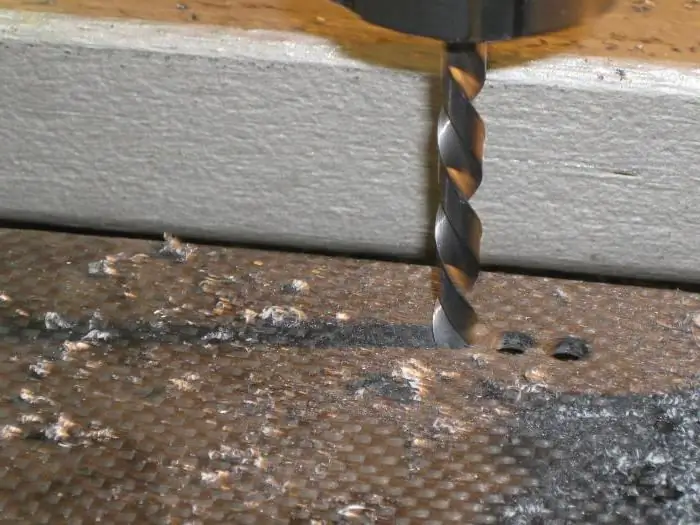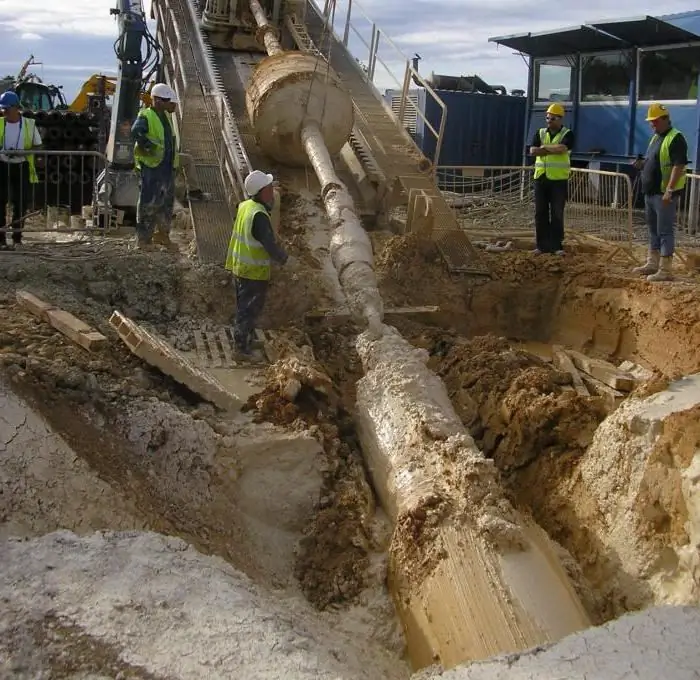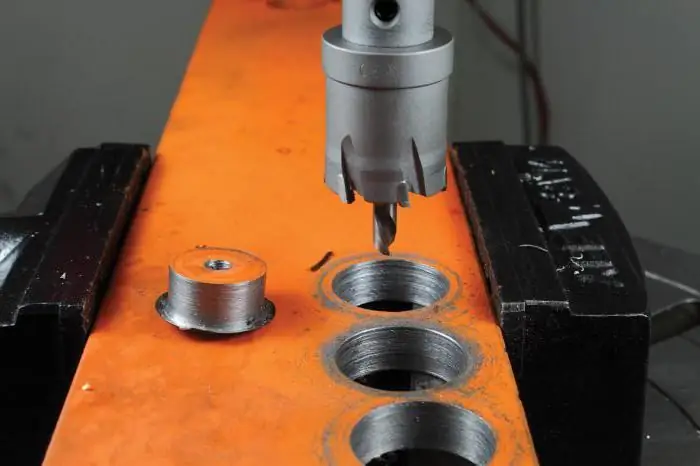2026 Author: Howard Calhoun | [email protected]. Last modified: 2025-01-24 13:10:37
Humanity has been successfully developing underground space for more than a century. We are talking not only about subways, which are present in all major cities of the world, but also about mine workings created for the extraction of minerals. In both cases, special equipment is used - tunneling shields, which guarantee the safety of equipment and maintenance personnel during earthworks.

The first tunneling shield was used in 1825 during the construction of a tunnel under the River Thames. Since then, this type of equipment has been repeatedly used in the construction of subways in such large cities as Moscow, St. Petersburg, Yekaterinburg and other megacities.
Tuning Shield
Tuning shield is a movable prefabricated metal structure in the form of a hollow cylinder. It is built at the site of a mine working or during the construction of a subway to protect mines laid in a horizontal direction from collapse. Sometimes it is also called a temporary or mobile support - a special design,which is being built to protect the walls of the tunnel from collapse.
Structurally, tunneling shields are a complex set of equipment, which includes three main parts:
- Knife. The very process of drilling and mining of rock takes place in it.
- Reference. Serves to accommodate auxiliary equipment, as well as hydraulic jacks, forcing the shield to move forward.
- Tail. Provide protection for personnel when erecting permanent support.

The tunneling shield may include a variety of equipment that is necessary to simplify the work of developing a face, transporting earth masses, strengthening and protecting walls from collapse.
Design of tunnel shield
The main elements of the shield are the shell and the knife ring, on which the cutting elements of the tunneling shield are located. In some models, the "cutters" are made in the form of hard-alloy inserts located at a certain angle to each other on the working surface of the rotor, as well as a support ring.
Forward, into the space in front of the knives, the shield is advanced by hydraulic cylinders that rest on the last lining ring. After that, downhole hydraulic cylinders are involved in the process, which press the prefabricated wooden panels against the rock so that it does not collapse.
The free space between the support and knife ring is divided into cells by vertical partitions and into tiers by horizontal bulkheads. Within these compartments isnecessary equipment. Horizontal bulkheads can be extended with hydraulic jacks.
Classification of tunneling shields by cross-sectional shape
As a rule, tunneling shields are assembled directly at the work site. The support ring and knife ring are constructed from steel segments, and the shell is formed from steel sheets bent along a cylindrical surface.

Horizontal drilling equipment differs in cross-sectional shape, dimensions, development method and application area. The most common cross-sectional shape is a circle. Less common are cars of rectangular, arched and other shapes.
Types of shields according to the length of the diameter
Based on the diameters of tunneling shields, the following types of structures are distinguished:
- Small (up to 3200 mm) - used in urban services for laying collector tunnels.
- Medium (up to 5200 mm) - used for laying hydraulic communications and mining.
- Large (over 5200 mm) - practiced when creating railway tunnels, subway lines, large mine workings.
The cross-sectional area of the working surface varies from 10 to 16 or more square meters, depending on the diameter of the working surface.
Types of equipment by method of face development
When developing minerals or creating underground communications, horizontal drilling is carried out by various typestunnel shields.

They differ in the degree of mechanization of the executive bodies:
- Fully mechanized. To destroy the rock in such structures, special equipment is used - excavator, planetary, rod working bodies, as well as hydromechanical impact installations.
- Partially mechanized. The absence of a special device for the development of soil layers is their exclusive feature. To destroy rocks, jackhammers are used here, blasting is carried out or the front pointed part of the shield is pressed into the ground.
- Special tunnel shields. In such structures, the head part is closed. They are used to create tunnels in particularly difficult geological conditions.
At the same time, the structures are divided into types designed to work in various conditions - moist soils, for the development of faces in loose and unstable rocks and for driving into lands with a strength of 0.5 to 5 and higher.
Purpose of equipment
Tuning shields are used to create mines in a horizontal direction. This type of work is referred to as "horizontal drilling" and is used in various branches of human activity. Most often it is used to create and expand existing subways, to develop minerals.

Recently, the laying of various communication lines under automobileroads, alignments and other means of communication, referred to as horizontal directional drilling, or HDD.
Horizontal directional drilling
The widespread use of this technology is due to its high economic efficiency. Specifically:
- removes the need to repair roads after events;
- no need to block traffic flow and create detours;
- it is possible to lay new lines without violating the integrity of existing ones.
When applying the horizontal directional drilling method, the operator of the tunneling shield creates a pilot hole, which is then expanded with a rimmer - a reverse-acting expander. A string of pipeline is being pulled through the finished tunnel.
As the latter, a polymer sleeve is often used, which is then filled with concrete. After the cement mixture hardens (about 21 days), the new communication line is ready.
Tuning shields today
A living example of the use of a tunneling shield can be the construction of a section of the tunnel along the "Frunzensky radius" with a length of 3760 meters between the stations "Prospect of Glory" and "Yuzhnaya" in the St. Petersburg metro.
The project involves a company from Germany Herrenknecht AG, which undertakes to manufacture a tunneling shield. Metrostroy is a participating company from the Russian side, whose employees developed a project to create the first double-track tunnel in the post-Soviet space.

Formerly domestic firmalready cooperated with a German manufacturer. The Aurora shield provided by him is actively used for the construction of inclined passages at the Spasskaya station.
Recommended:
What is a drilling platform? Types of drilling platforms

The drilling platform is a multi-purpose rig that is widely used in the oil and gas industry. Platforms can be operated at different depths
Drilling holes in metal, in wood. Drilling large holes in the wall

The article is about drilling. Considered operations for creating holes in wood, metal materials and walls
Exploratory drilling: features, equipment. Assistant driller for production and exploration drilling

Exploration drilling is an activity aimed at finding raw materials in the bowels of the earth. At the beginning of the 19th century in France, they searched for water in this way. In the 50s of the same century, oil was searched for with the help of exploratory drilling
HDD - drilling technology. Horizontal directional drilling

The article is devoted to the technology of horizontal directional drilling. The features of the method, the nuances of its implementation, etc. are considered
Drilling is a type of mechanical processing of materials. drilling technology. Drilling equipment

Drilling is one of the types of material machining by cutting. This method uses a special cutting tool - a drill. With it, you can make a hole of different diameters, as well as depths. In addition, it is possible to create multifaceted holes with different cross sections

